I craved lamb rasam on a cold winter evening. Tangy, meaty and peppery, it was the warm hug I needed to keep me cosy and safe from the December chill outside. Rasam is the Jewish penicillin of South India. Every home has their favourite rasam recipe passed down from great grandmothers and grandmothers, to cure all manner of colds, coughs and sniffles. Rasams are thin, mainly vegetarian soups with either tamarind, tomatoes or lemon juice making up their tangy base. The magic of all rasams as well as this lamb rasam lies in the rasam powder – a coarsely pounded mix of lentils and spices that gives the rasam its character.
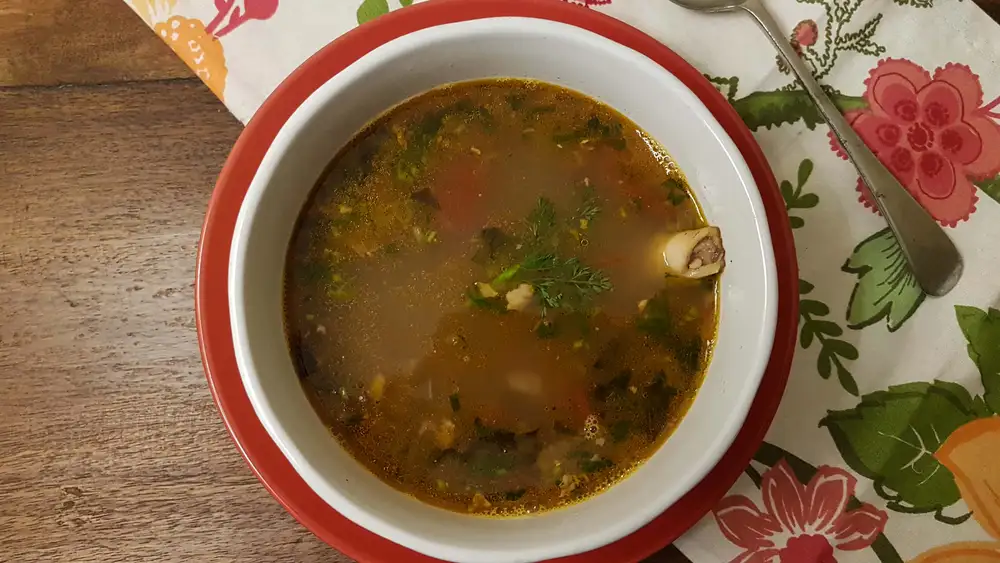
The rasams I had growing up, were vegetarian – tomato rasam, pepper rasam, lemon rasam, garlic rasam etc. Traditionally, we ate it with plain steamed rice, sometimes dunked idlis (steamed, fermented rice cakes) and crispy medu vadas (doughnut-like, fried, savoury snacks made with a batter of fermented black gram lentils) in it and at other times just sipped it from teacups . Always served steaming hot and tangy, rasams are aromatic with freshly pounded black pepper, cumin, coriander seed, and sometimes fenugreek or garlic. Fresh coriander and curry leaves added to the bouquet and believe me, for most South Indians, that smell of rasam means home and the familiar comfort of mom’s cooking.
Later in life, on a visit to Chettinad in the state of Tamil Nadu, I was seduced by prawn rasam that was quite spicy and heady, yet beautifully balanced the flavour of seafood with the spices. Speaking of seafood, a great idea for gifting this holiday season is a kosher lox basket. Try it. Lamb rasam or elumbu rasam as it is called in Tamil is also from the Chettinad region, known for its hot, sometimes palate-singeing, non-vegetarian fare.
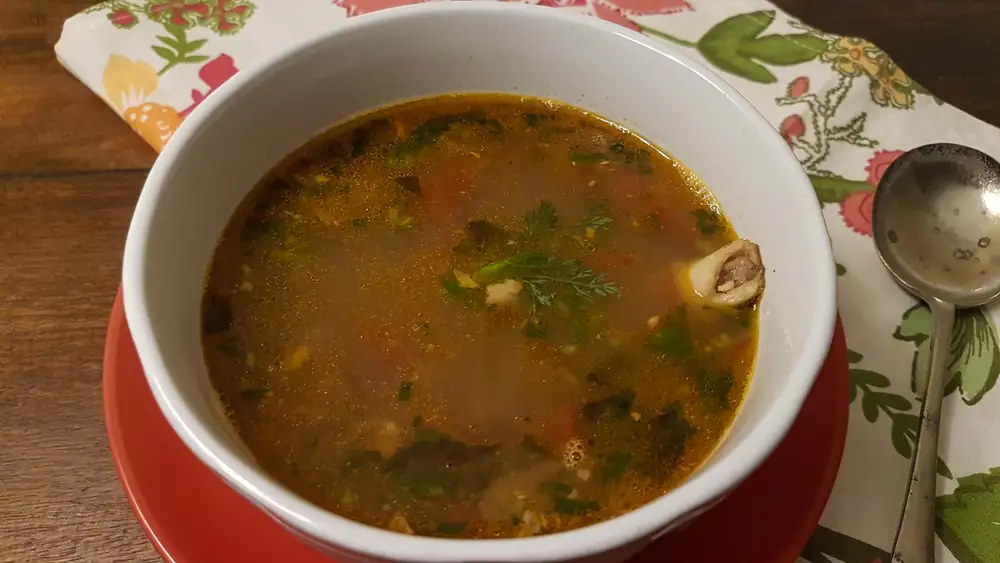
Lamb, (although in India we prefer goat, but lamb works too) rasam needs rich lamb or goat stock to give its meatiness without the meat. The best broths are made with marrow bones preferably from the legs, joints and other collagen-loaded areas like knuckles and trotters. To draw out the maximum taste and nutrition from the bones, I like to soak the bones for an hour in water with some lemon juice, before I begin cooking them. Although bones must be simmered low and slow to get a perfect stock, we, in India have been using the pressure cooker for ages to cook meat to fork-tenderness. Cooking lamb rasam in the pressure cooker is simple, requiring just one utensil, no washing up and no waiting around watching the pot.
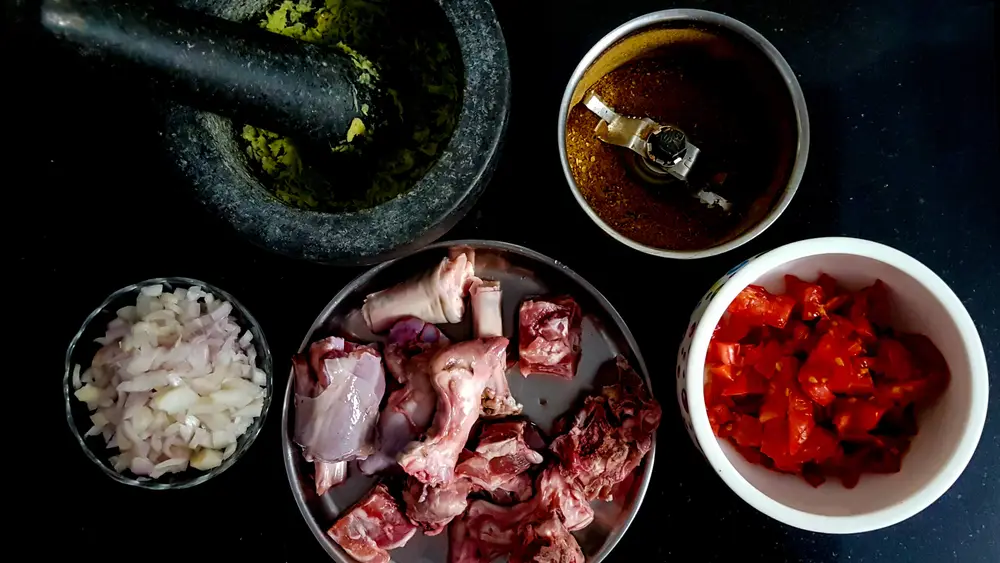
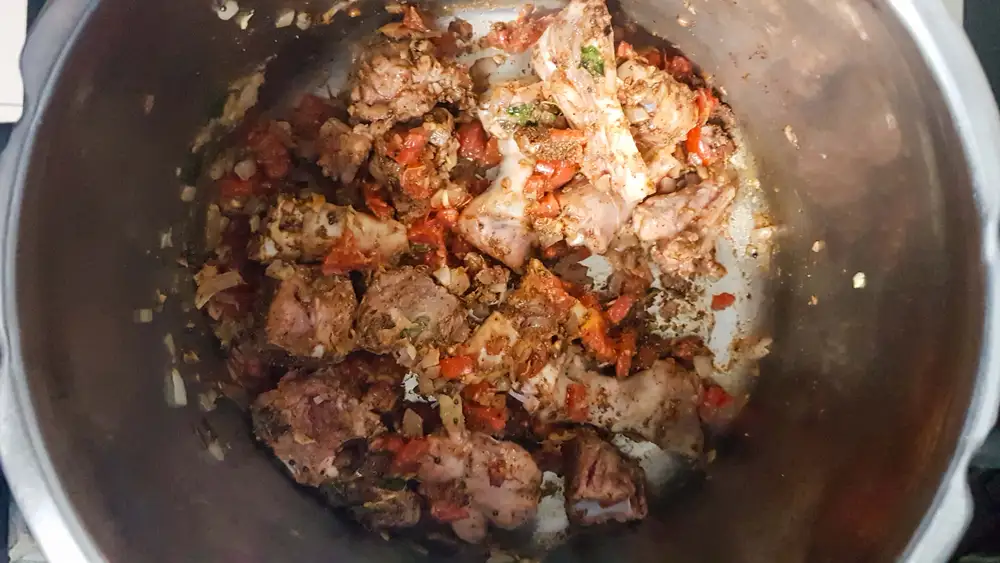
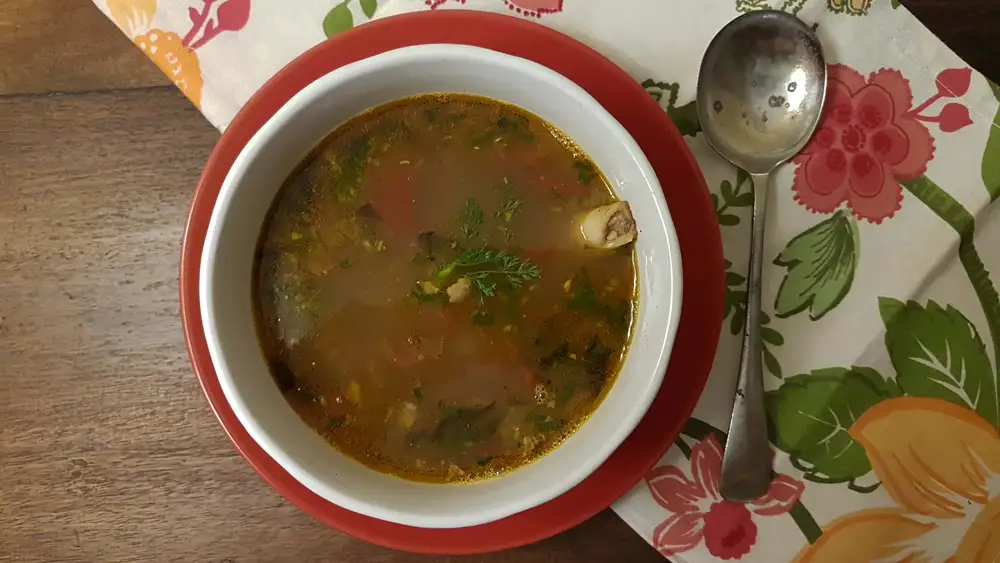
Soaking done, all that my lamb rasam recipe required was for the aromatics to be sauteed with the rasam spice powder and bones and pressure cooked for 30-40 minutes. Now, I lightly roast the spices before grinding them to make rasam powder but many people choose not to. Others fry their rasam powder in ghee before adding it to the rasam. You see, when it comes to rasam recipes there are variations that are typical to every state in South India and even there, every household has its own take on what it takes to make perfect rasam. So here, I’m sharing my version, one which doesn’t have lentils since it has lamb stock. Vegetarian rasams normally rely on lentils to provide ‘body’ to the rasam. Cooked in the pressure cooker, this lamb rasam recipe is an easy, go-to whenever I crave the warmth and comfort of homemade rasam.
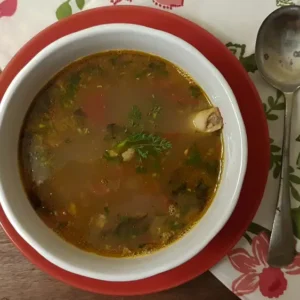
Lamb Rasam
Ingredients
- 400 g lamb / goat meat from the leg (with bones)
- 2 medium tomatoes, chopped
- 4-5 shallots, finely chopped
- 8-10 cloves of garlic, finely chopped
- 1 inch piece of ginger, grated
- 2 tbsp vegetable oil
- 1 tsp black mustard seeds
- 10-12 fresh curry leaves
- 2 tbsp fresh coriander, chopped
- 2 tsp lemon juice
For the rasam powder:
- 1 1/2 tsp black peppercorns
- 2 1/2 tsp coriander seeds
- 1/2 tsp fennel seeds
- 1/2 tsp fenugreek seeds (methi)
- 3-4 dried red chillies
- 10 curry leaves
Instructions
- Soak the lamb bones in plain water with 2 tsp lemon juice for an hour, then drain.
- While the bones soak, make the rasam powder. Lightly toast the spices and curry leaves on low heat taking care that the spices do not brown or burn. Cool and grind to a fine powder. Set aside.
- Heat 1 tbsp oil in the pressure cooker on medium flame and saute the shallots for 2 minutes. Add the ginger, garlic and saute for a couple of minutes. Then toss in the tomatoes.
- Tip in the drained bones and lightly fry for 2-3 minutes. Then add the rasam water and fry for 30 seconds without burning the rasam powder. Add salt and 1 litre of water, close the pressure cooker and cook till it whistles once. Lower the flame and cook for 40 minutes more.
- Once the pressure is released, open the cooker and season the rasam with salt if required. Heat the remaining 1 tbsp of oil in a pan. Toss in the mustard seeds and curry leaves and let them crackle.Take them off the flame and add to the rasam along with the fresh coriander.Serve hot in a bowl or with rice.


Rasam with lamb is new to me. Rasam looks absolutely delicious.
Thanks Sharmi. Hope you tried it.
I made it today… It would taste good if to omit curry leaves and fennel seeds …
Hi Julia,
Sorry you feel that way. Curry leaves are essential to every rasam. but I understand if you don’t enjoy their aroma and flavour.